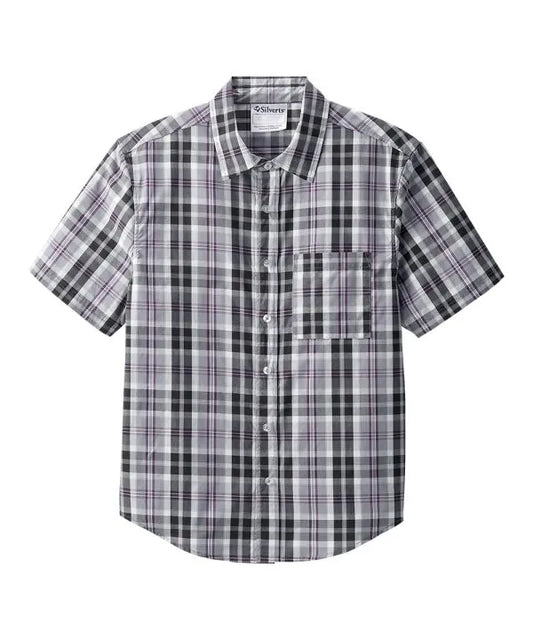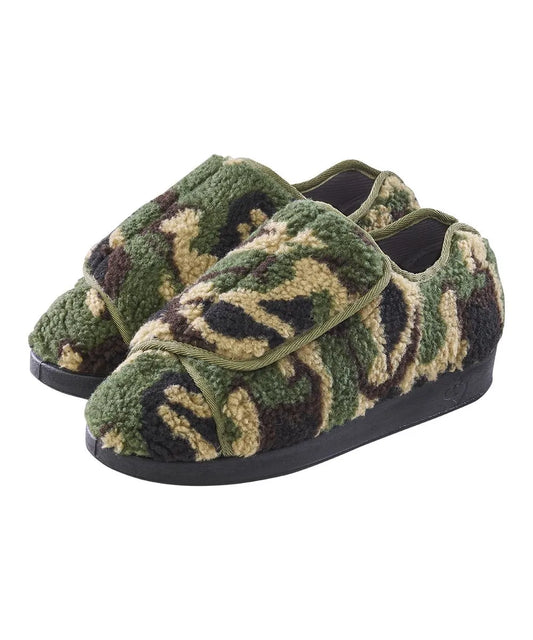Adaptive clothing consists of innovative garments that are designed with a specific purpose in mind: to make daily dressing and wear more comfortable and functional for individuals with unique needs. One such group that greatly benefits from adaptive clothing is individuals with autism. Autism is a neurodevelopmental disorder characterized by a range of challenges, including sensory sensitivities and difficulty with fine motor skills. In this blog post, we will explore the types of adaptive clothing that individuals with autism may find comfort in.
- Sensory Friendly Tops
For individuals with autism, certain fabrics and clothing features can be discomforting and evoke negative physical feelings. Fortunately, adaptive clothing has tops that are designed with sensory sensitivities in mind. For instance, sensory-friendly tops typically feature tagless labels or heat-transferred information instead of traditional sewn-in labels. This eliminates the discomfort and irritation caused by scratchy tags rubbing against the skin, providing a seamless, irritation-free experience. The seams in regular clothing can also be a major source of discomfort for individuals with sensory sensitivities. Thus, sensory-friendly tops are crafted with seamless designs to ensure that there are no rough edges or seams that might cause irritation or discomfort.
Moreover, sensory-friendly tops often use soft, breathable, and hypoallergenic materials. Fabrics like organic cotton, bamboo, or blends designed to be gentle on the skin are commonly used. These materials help reduce sensory overload and ensure maximum comfort. Additionally, individuals with autism often have difficulty regulating their body temperature. Thus, sensory-friendly tops are often designed to help with temperature control, using moisture-wicking or insulating fabrics as needed.
- Magnetic Closure Shirts
Individuals with autism may sometimes have difficulty fastening buttons and zippers on their shirts, which makes the dressing process more difficult. Magnetic closures on clothing replace traditional buttons or zippers, making it easier for individuals with autism to dress themselves independently. For example, June Adaptive offers a Women’s Fleece Cardigan with Magnetic buttons. These shirts often look like regular button-up shirts but have hidden magnets behind the buttons, allowing for quick and effortless fastening. To secure the shirt, one simply needs to align the magnets, and they snap into place with a satisfying click. This eliminates the need for precise buttoning and intricate hand movements.
Moreover, the frustration associated with struggling to button a shirt can be a significant source of stress for both individuals with autism and their caregivers. Magnetic closure shirts minimize this frustration, creating a smoother and more peaceful dressing experience. Magnetic closure shirts can also empower individuals with autism to dress themselves independently. This newfound ability fosters self-confidence and a sense of accomplishment, promoting greater autonomy in daily routines.
- Adaptive Pants
Pants can be complicated to wear since they often include buttons and zippers, and can be tight on the skin. Adaptive pants, on the other hand, usually feature elastic waistbands, adjustable leg openings, or hook-and-loop closures instead of traditional zippers and buttons. Some adaptive pants also offer extended or removable waistbands for added comfort and convenience. This can help individuals with autism feel more comfortable in their pants, allowing them to feel more confident and less irritated throughout the day.
Elastic waistbands are a common feature in adaptive pants and bottoms. They replace traditional button and zipper closures, making it easier for individuals with autism who struggle with detailed instructions or motor control to pull the pants on and off. The elastic waistbands also provide a secure fit while allowing for flexibility and comfort. For example, June Adaptive offers a pair of Men’s Cotton Pants with Elastic Waist that allows for ease of dressing. Moreover, some adaptive pants feature adjustable leg openings with hook-and-loop fasteners or snaps. This feature is especially helpful for individuals who may need extra room or a more tapered fit around the ankles. It allows for customization to accommodate various needs and preferences.
In addition, many adaptive pants are designed as pull-on pants, meaning they do not have any front closures. Instead, they can be easily pulled up and down, simplifying the dressing process. Overall, adaptive garments come in a variety of styles to suit different occasions and preferences. Options may include jeans, slacks, sweatpants, shorts, and even skirts. This variety allows individuals to choose bottoms that meet their needs and personal style.
- Dresses and Skirts
Dresses and skirts can be overstimulating for individuals with autism to wear and take off. Traditional versions tend to have zippers, buttons, and extra details that can be overwhelming to manage. Fortunately, adaptive dresses and skirts are designed to be easy to put on and take off. They may incorporate features like stretchy materials, larger armholes, or wrap-around designs with adjustable closures, ensuring a comfortable and stylish fit.
Many adaptive dresses and skirts feature wrap-around designs with adjustable closures. Wrap-around designs in dresses and skirts offer a customizable fit. They typically involve overlapping fabric panels that can be adjusted to the wearer's specific size and comfort. This makes it easy to adapt the clothing to individual body shapes and preferences.
Depending on the design, wrap-around dresses and skirts may also use ties, buttons, snaps, or hook-and-loop fasteners to secure the garment in place. These closures can be adjusted to achieve a comfortable fit, and they provide flexibility to accommodate changes in body size or shape. Hook-and-loop strips, commonly known as Velcro, consist of two components: hook (the rough side) and loop (the soft side). When pressed together, they create a secure and adjustable closure. Many adaptive garments use these types of hook-and-loop strips discreetly, making them virtually indistinguishable from traditional closures. This means that the appearance of the clothing is not compromised.
Moreover, adaptive dresses and skirts often come with seamless designs to eliminate rough seams that could cause irritation. Tagless labels or heat-transferred information further enhance the sensory experience. Overall, adaptive dresses and skirts empower individuals to dress themselves with minimal assistance, promoting independence and boosting self-confidence.
- Footwear
Traditional footwear can be complicated due to shoelaces and consist of uncomfortable fits for individuals with autism. Adaptive footwear can be a solution, as it encompasses shoes, sandals, and sneakers designed for easy on-and-off access. This reduces the time and effort required for individuals to put on and remove their shoes. This is particularly helpful for those who struggle with coordinating instructions and movement or those who may have difficulty bending down to tie laces. They often feature wide openings, hook-and-loop closures, or elastic laces to accommodate different needs and foot shapes.
Many adaptive shoes feature wide openings, making it easier to slide the foot into the shoe without having to stretch the shoe's opening or struggle with tight spaces. They significantly reduce the time required to put on shoes, which can be particularly beneficial during busy mornings or when individuals need to get dressed independently. This quick dressing process minimizes stress and frustration.
Moreover, hook-and-loop closures, commonly known as Velcro, are a hallmark of adaptive footwear. They replace traditional laces, buckles, or buttons, providing a secure and adjustable closure that is simple to use. To fasten or unfasten, one simply needs to press the hook-and-loop strips together or pull them apart. This is ideal for individuals with fine motor difficulties, limited dexterity, or other motor challenges. For example, June Adaptive offers a pair of Men’s Wide Easy-On Shoes that feature a large and secure Velcro closure. Velcro closures also offer an adjustable fit as wearers can customize the tightness of the closure to their comfort level. They hold the shoe securely in place, preventing it from slipping off or becoming undone during wear.
In addition, elastic laces are another alternative to traditional shoelaces. These laces allow for easy slip-on and secure fit, eliminating the need for tying and untying. Individuals can simply slide their feet into the shoes without the need for intricate lacing and tying, making the process faster and more accessible. While elastic laces make it easy to put on shoes, they still provide a secure fit. The stretchiness of the laces allows for flexibility and movement while ensuring that the shoes stay in place during wear.
- Undergarments
Even undergarments can be adapted to meet specific needs to help individuals with autism have an easier time dressing in the mornings. Seamless underwear and bras eliminate rough seams and edges that can cause irritation and discomfort, particularly for individuals with sensory sensitivities. Adaptive undergarments also use tagless labels or heat-transferred information, preventing the irritation and discomfort caused by traditional tags.
Moreover, some adaptive undergarments incorporate easy-to-use closures such as hook-and-loop strips or magnetic closures, ensuring that individuals can put on and take off their undergarments with minimal effort and assistance. Adaptive bras may also come with front or side closures, making them easier to put on and take off. These closures are particularly beneficial for individuals with mobility or fine motor skill challenges.
Overall, adaptive clothing has emerged as a method of making dressing more comfortable for individuals with autism. By prioritizing functionality and sensory considerations, these garments empower individuals to express themselves confidently, while alleviating daily challenges. From adaptive pants to adaptive undergarments, the adaptive clothing industry continues to evolve and embrace inclusivity for individuals with autism.


















